
How to Use TIC 36V4: Examples, Pinouts, and Specs
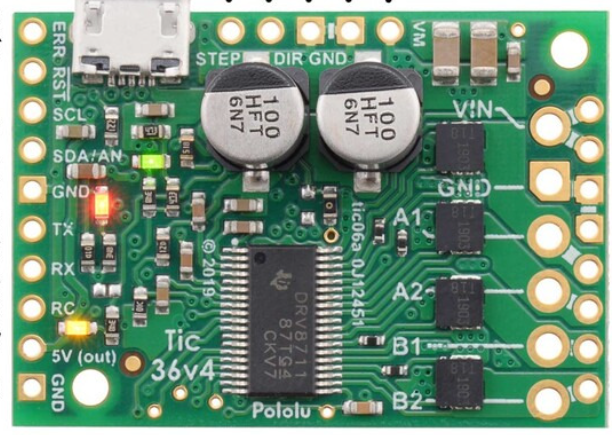
 Design with TIC 36V4 in Cirkit Designer
Design with TIC 36V4 in Cirkit DesignerIntroduction
The TIC 36V4, manufactured by Pololu, is a high-performance integrated circuit designed for power management applications. It is capable of handling input voltages of up to 36 volts and is equipped with advanced features such as thermal protection and efficiency optimization. This makes it an ideal choice for applications requiring reliable and efficient power delivery.
Explore Projects Built with TIC 36V4
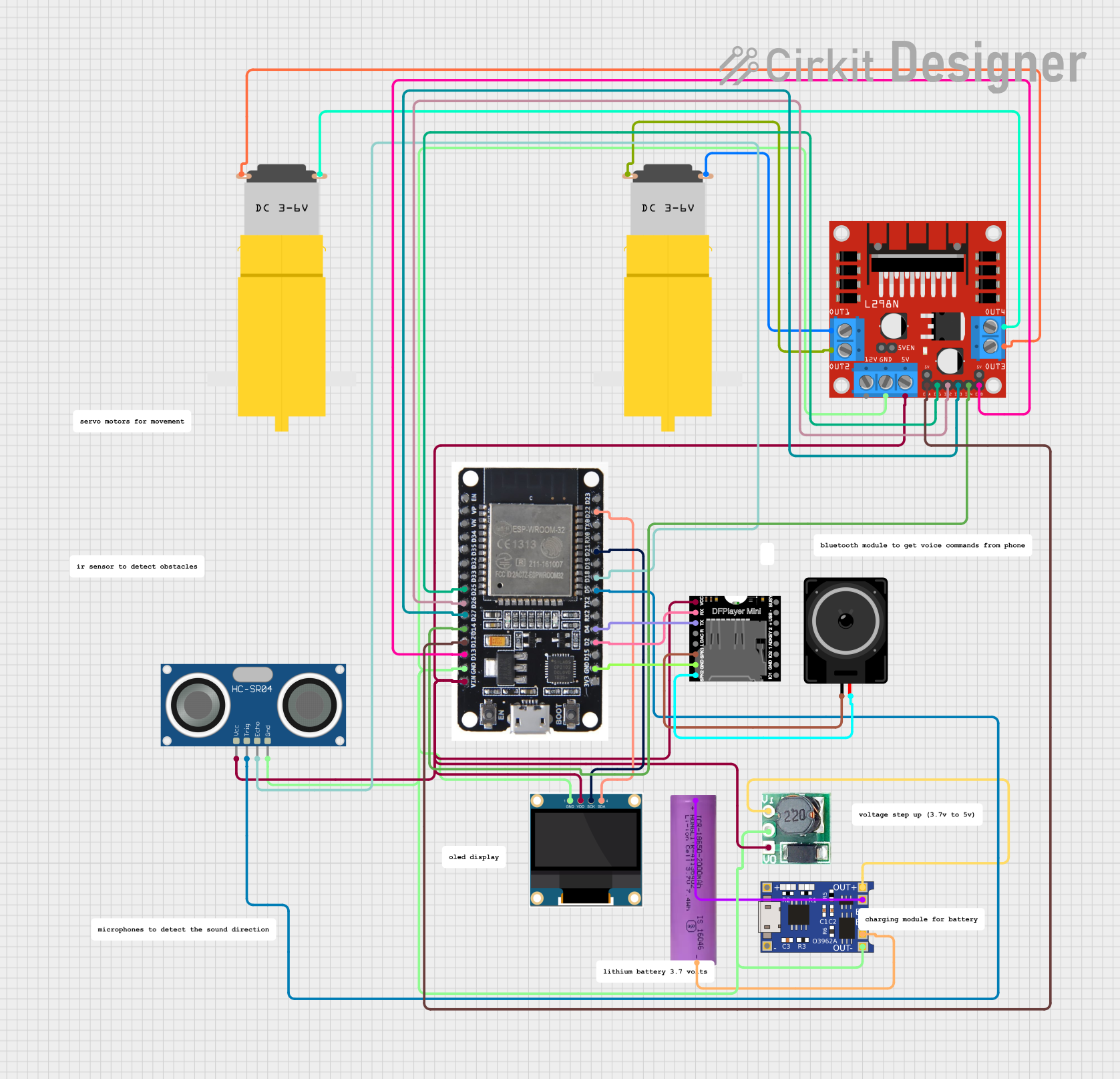
 Open Project in Cirkit Designer
Open Project in Cirkit Designer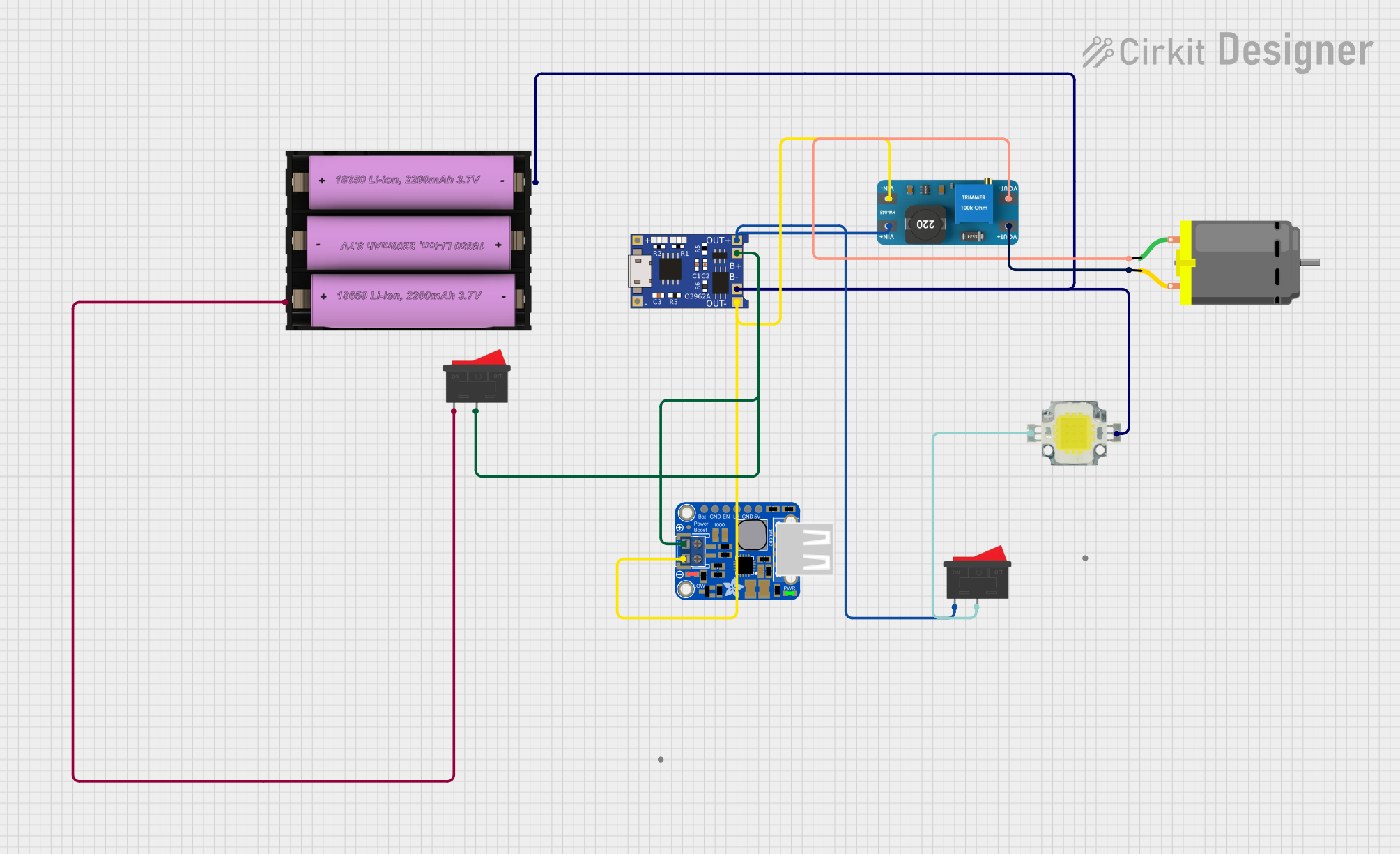
 Open Project in Cirkit Designer
Open Project in Cirkit Designer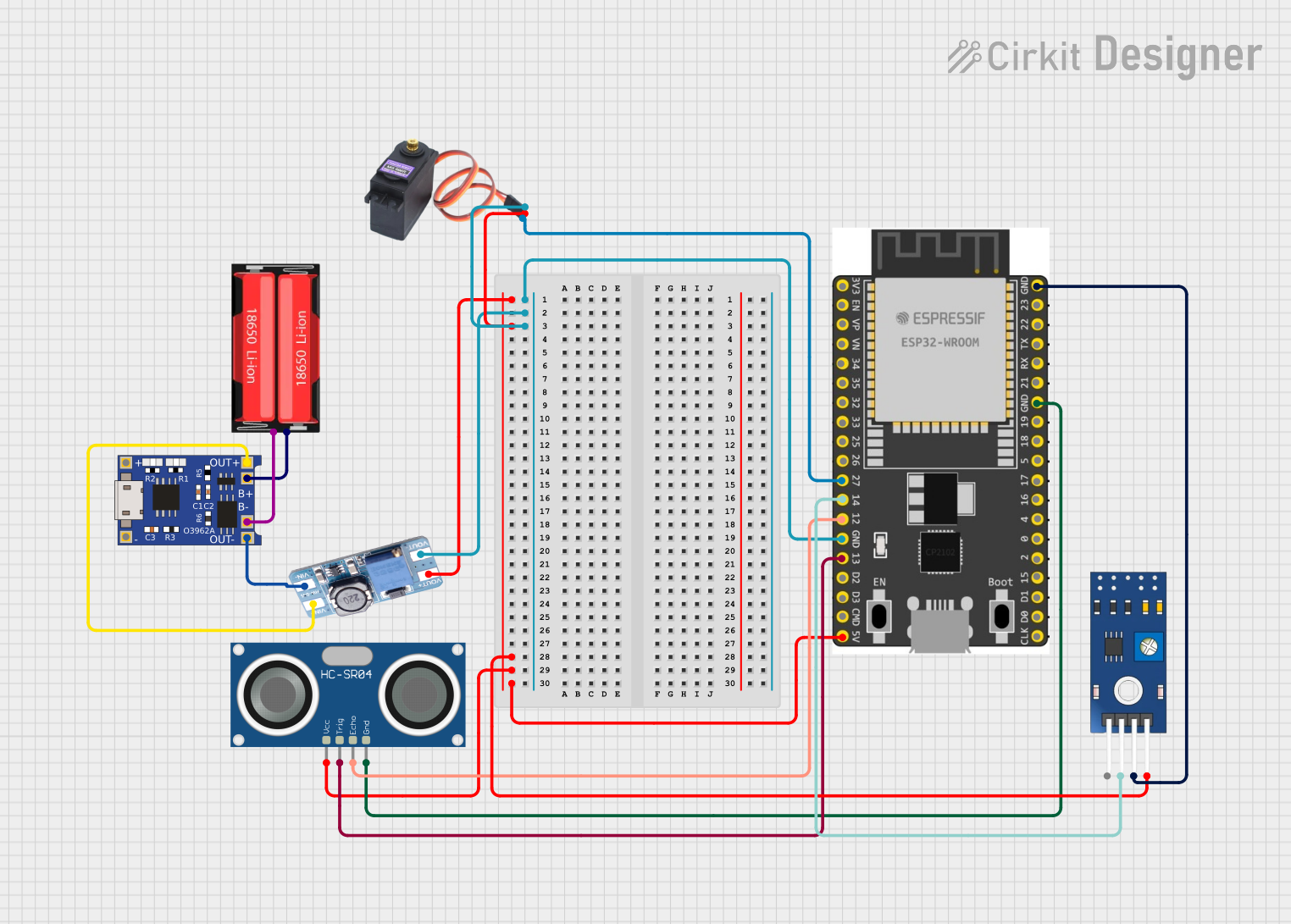
 Open Project in Cirkit Designer
Open Project in Cirkit Designer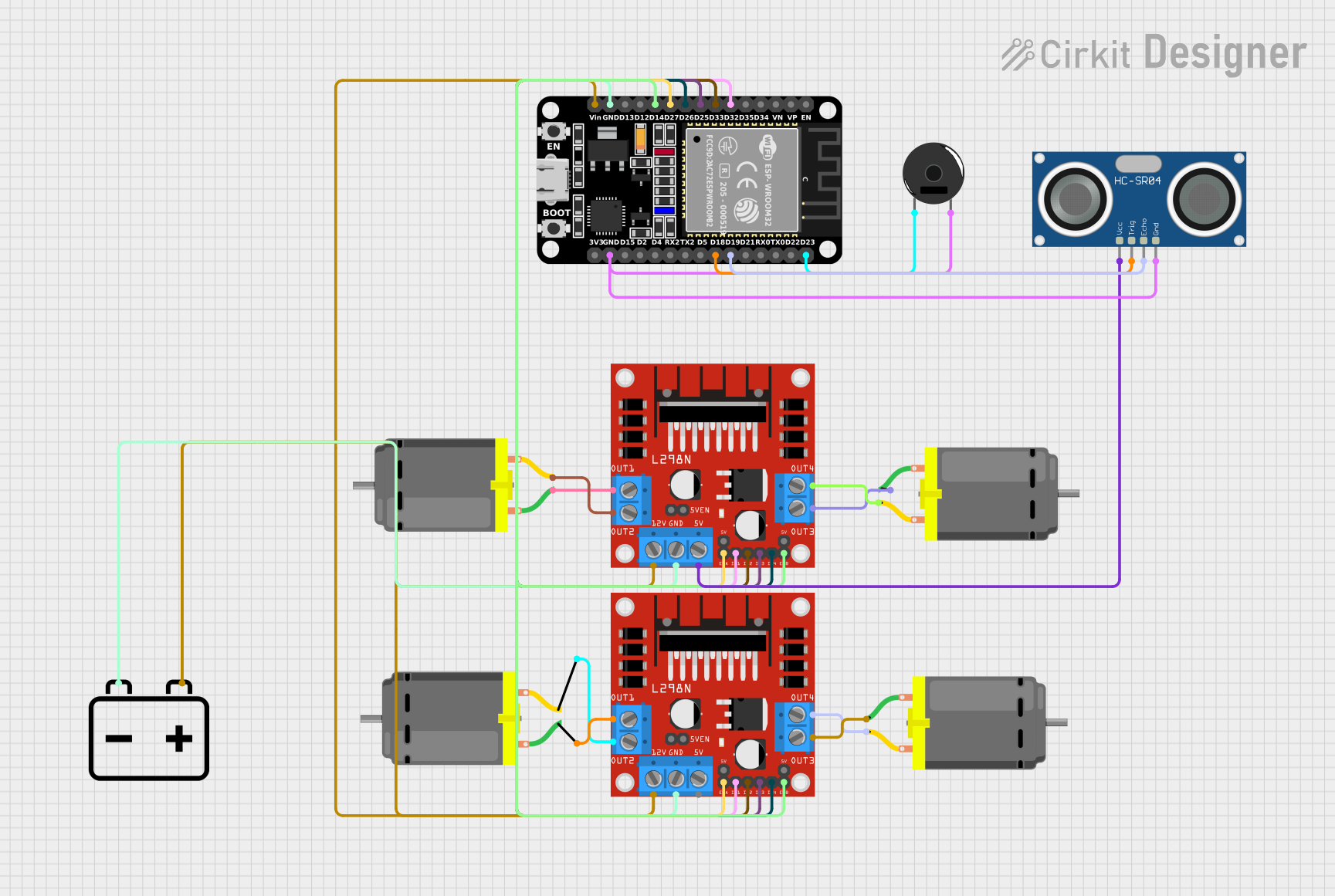
 Open Project in Cirkit Designer
Open Project in Cirkit DesignerExplore Projects Built with TIC 36V4

 Open Project in Cirkit Designer
Open Project in Cirkit Designer
 Open Project in Cirkit Designer
Open Project in Cirkit Designer
 Open Project in Cirkit Designer
Open Project in Cirkit Designer
 Open Project in Cirkit Designer
Open Project in Cirkit DesignerCommon Applications and Use Cases
- Motor control systems
- Robotics and automation
- Battery-powered devices
- Industrial power management
- High-efficiency DC-DC converters
Technical Specifications
The TIC 36V4 is designed to deliver robust performance in demanding environments. Below are its key technical specifications:
General Specifications
| Parameter | Value |
|---|---|
| Input Voltage Range | 8 V to 36 V |
| Maximum Output Current | 4 A |
| Efficiency | Up to 95% |
| Operating Temperature | -40°C to +85°C |
| Thermal Protection | Yes |
| Control Interface | USB, TTL Serial, I²C, RC |
Pin Configuration and Descriptions
The TIC 36V4 features a compact pinout for easy integration into circuits. Below is the pin configuration:
| Pin Number | Pin Name | Description |
|---|---|---|
| 1 | VIN | Input voltage (8 V to 36 V) |
| 2 | GND | Ground connection |
| 3 | VOUT | Regulated output voltage |
| 4 | ENABLE | Enable/disable the output |
| 5 | SCL | I²C clock line |
| 6 | SDA | I²C data line |
| 7 | TX | TTL serial transmit |
| 8 | RX | TTL serial receive |
| 9 | USB+ | USB data positive |
| 10 | USB- | USB data negative |
Usage Instructions
The TIC 36V4 is versatile and can be used in a variety of circuits. Below are the steps and best practices for using the component:
Basic Setup
- Power Supply: Connect a DC power source (8 V to 36 V) to the
VINpin. Ensure the power source can supply sufficient current for your application. - Ground Connection: Connect the
GNDpin to the ground of your circuit. - Output Connection: Connect the load to the
VOUTpin. Ensure the load does not exceed the maximum current rating of 4 A. - Enable Pin: Use the
ENABLEpin to control the output. Pull it high to enable the output or low to disable it.
Using with Arduino UNO
The TIC 36V4 can be controlled via I²C or TTL serial communication. Below is an example of using I²C with an Arduino UNO:
Arduino Code Example
#include <Wire.h> // Include the Wire library for I²C communication
#define TIC_I2C_ADDRESS 0x0F // Replace with the actual I²C address of your TIC 36V4
void setup() {
Wire.begin(); // Initialize I²C communication
Serial.begin(9600); // Initialize serial communication for debugging
// Send a command to enable the TIC 36V4 output
Wire.beginTransmission(TIC_I2C_ADDRESS);
Wire.write(0x85); // Example command to enable output (refer to TIC 36V4 datasheet)
Wire.endTransmission();
Serial.println("TIC 36V4 initialized and output enabled.");
}
void loop() {
// Add your application logic here
}
Important Considerations
- Thermal Management: Ensure adequate cooling for the TIC 36V4, especially in high-current applications. Use a heatsink or active cooling if necessary.
- Input Voltage: Do not exceed the maximum input voltage of 36 V to avoid damaging the component.
- Noise Filtering: Add decoupling capacitors near the
VINandVOUTpins to reduce noise and improve stability.
Troubleshooting and FAQs
Common Issues and Solutions
No Output Voltage
- Cause: The
ENABLEpin is not pulled high. - Solution: Check the
ENABLEpin connection and ensure it is set to a high logic level.
- Cause: The
Overheating
- Cause: Excessive current draw or insufficient cooling.
- Solution: Reduce the load current or improve thermal management with a heatsink or fan.
Communication Failure
- Cause: Incorrect I²C address or wiring.
- Solution: Verify the I²C address and ensure proper connections for
SCLandSDAlines.
Output Voltage Instability
- Cause: Insufficient decoupling or noisy input power.
- Solution: Add decoupling capacitors (e.g., 100 µF and 0.1 µF) near the
VINandVOUTpins.
FAQs
Q: Can the TIC 36V4 be used with a 12 V battery?
A: Yes, the TIC 36V4 supports input voltages as low as 8 V, making it compatible with 12 V batteries.
Q: How do I reset the TIC 36V4?
A: To reset the TIC 36V4, disconnect the power supply and reconnect it after a few seconds.
Q: Is the TIC 36V4 compatible with 3.3 V logic?
A: Yes, the TIC 36V4 supports both 3.3 V and 5 V logic levels for communication interfaces.
Q: Can I use the TIC 36V4 for motor control?
A: Yes, the TIC 36V4 is suitable for motor control applications, provided the motor's voltage and current requirements are within the component's specifications.